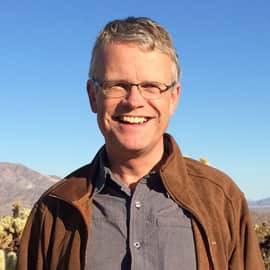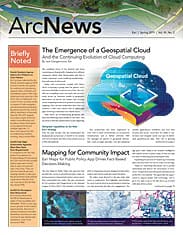As an academic—and especially now as president of the International Cartographic Association (ICA)—I attend quite a few conferences. The best ones, I have found, provide attendees with a balanced combination of exchanging knowledge and networking. Participants present their ideas and get constructive feedback while also listening to and looking at other people’s presentations to get inspired. They talk to old friends and usually make a few new ones (lest they stay in their comfort zones too much). Conferences with small, in-depth workshops really boost learning, while larger events enhance opportunities to meet new people.
The myriad communication aspects of conferences intrigue me. I find it interesting that a lot of attendees go home with notes consisting of keywords that represent whole ideas, a bunch of references to read and URLs to visit, and new acquaintances’ contact information to both record and act on. But in many cases, all this ends up in a postconference pile because day-to-day affairs inevitably get in the way. (Or am I the only one who has these problems?) The mobile apps that are popping up for specific conferences are certainly making it easier to structure all this information and, later, integrate it into postconference workflows. But I digress.
What I am really fascinated with is how the maps we use at conferences communicate different ideas—especially for those of us who routinely use world maps to display our findings on a global scale. For example, think about the maps that are used to illustrate the Sustainable Development Goals (SDGs)—the 17 objectives created by the United Nations General Assembly in 2015 that aim to eradicate poverty, end hunger, achieve gender equality, clean up the ocean, and do more by 2030. They typically have to cover the entire world, since the SDGs are global initiatives.
Over the course of my travels to conferences around the world, however, I have observed that even global-minded scientists are influenced by renowned cartographer Waldo Tobler’s first law of geography: “Everything is related to everything else, but near things are more related than distant things.” This is partly due to how locally biased geography education is. First, we learn about our own region and country; then we learn about our continent; and finally, we zoom out to the whole world. Recall the atlases you used in school as evidence of this.
I call this a local-global perspective, and I often wonder how it comes across at conferences and whether these differences in local perspectives are problematic. When a presenter puts North America at the center of a world map, for instance, how do attendees from other parts of the world—say, Europe—experience the map and the information it presents? Are they able to make the mental transformation needed to apply the North America-focused presentation to their own world view?
Take a look at these maps.

We see three different world maps, all choropleths of the same SDG-related topic made in the equal-area Mollweide projection. This allows viewers to compare individual values among countries. However, the positioning of the world—the location of the central meridian—is done locally. For Europe, I put the meridian over my hometown—Enschede, the Netherlands—at about six degrees west. This results in a typical Euro-centric perspective on the world. For Europeans, New Zealand is always on the edge of the map, and sometimes it isn’t even there at all (which recently led New Zealand prime minister Jacinda Ardern and comedian Rhys Darby to start asking why as part of a tourism campaign for the country). On the map from the Asian perspective, which puts the meridian on Xian, China, New Zealand moves toward center stage. But what about other countries that are split, appearing in two locations on the map, like China in the New York-centered map or Canada in the Xian-centered map? Do we value them twice, since we see them in two locations? Or do we more or less ignore them because they are far away and on the edge?
How would people from different continents discuss these mapped phenomena among themselves? And would they get enough information about them when the map is only flashed for a minute or two on a screen, before the next slide goes up? We all talk about the same data, but we come at it from different map perspectives. So do we actually talk about the same things, or do we just think we’re talking about the same things?
Perhaps, in addition to conversing with one another at conferences, we could use interactive maps during our presentations, or give out paper or PDF-based maps before the presentation begins that allow other attendees to take a closer look at specific continents, countries, or regions so they can discuss the issues at hand from their own local perspectives. We might be able to come up with some interesting solutions that way.


